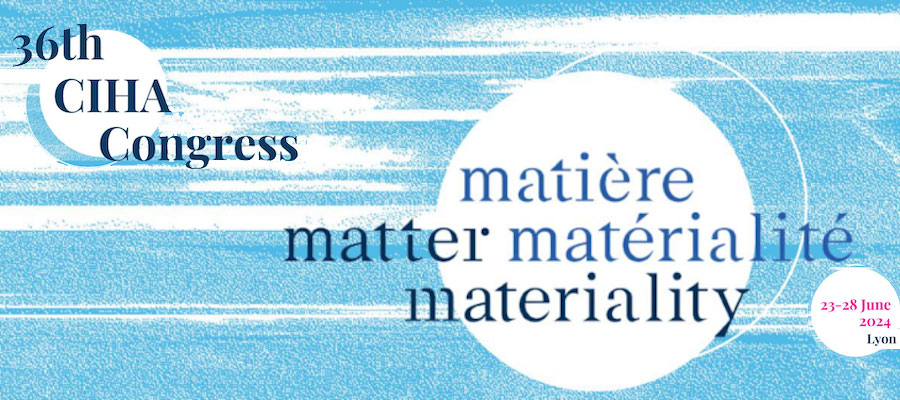Matter, Materiality and Pilgrimage in Pre-Modern Times: Production, Staging and Reception (session CIHA202400192), panel at the 36th Congress of the Comité international d’histoire de l’art (CIHA), Lyon, June 23–28, 2024
Submissions due September 15, 2023
This 180-minute paper session aims to explore the materiality of objects and places in pilgrimage sites from various cultures and religions during pre-modern times. The aim is to evaluate the converging and diverging features of materials such as gold, silver, bronze, glass, wood, bone, skin, hair, nails, precious stones, pigments, stone, soil, wax, printed matter, water and other liquids, plants, leather, fabric that were used, formed, experienced, perceived and variously appropriated by pilgrims as well as by the local actors and devotees. Pilgrims habitually travelled in well-established routes dotted with sacred sites and shrines, occasionally with overlapping stops, allowing for comparative perceptions of material properties. Their movement adopted ritual attributes that extended to the symbolization of natural and artificial objects, whose materials became incorporated in a symbolic perception of space. Organic and inorganic relics and their containers, painted panels, frescoes, liquids, tombs, buildings, natural elements were encountered by the pilgrims, and their attributes, whether material or immaterial, animated their experience. The staging strategies employed in specific visual and spatial sceneries to ensure the objects’ cultic success, prompted further interactions among pilgrims, objects, and places. At the same time, the afterlives of pilgrimage objects and sites raise questions about their staging and reception in the present day.
To promote a comprehensive exploration of the subject from a transregional and transreligious perspective, we invite submissions that centre on – but are not restricted to – the following questions:
- In what ways do pilgrims’ experiences, practices, and expectations shape the production and materiality of objects and places, and how is this recorded/experienced by pilgrims?
- How are specific media, materials and techniques established and connected to the objects in question?
- How do materials connect to and are altered by pilgrims (e.g. the effects of the visual, tactile, and more generally sensorial interactions with objects, such as touching, kissing, lighting, incorporating etc.)?
- How does pilgrims’ movement impact their perception of objects, buildings, and landscapes?
- In pilgrimage sites, specific objects/spots acquire symbolisms. Is this translated in their material context and by which processes?
- How do natural objects, e.g. mountains, plants, rocks etc., become incorporated in a symbolic perception of space and how is their materiality expressed, experienced and valued?
- How are staging devices employed in cultic settings and what materials and techniques are typically used in their construction?
- How have museums and collections curated and displayed pilgrimage objects and artifacts?
- What are the challenges and opportunities in representing the materiality of pilgrimage practice in a museum context, considering the ethical implications of the extraction, trade, and ownership of pilgrimage objects and materials?
We welcome proposals from professionals, independent researchers, doctoral students, junior researchers, senior researchers in art history or related disciplines, from all over the world.
Submissions should be made through the conference website.
Session organizers
Vesna Scepanovic, Univeristy Of Fribourg
Sofia Zoitou
Ivan Foletti, Masaryk University
